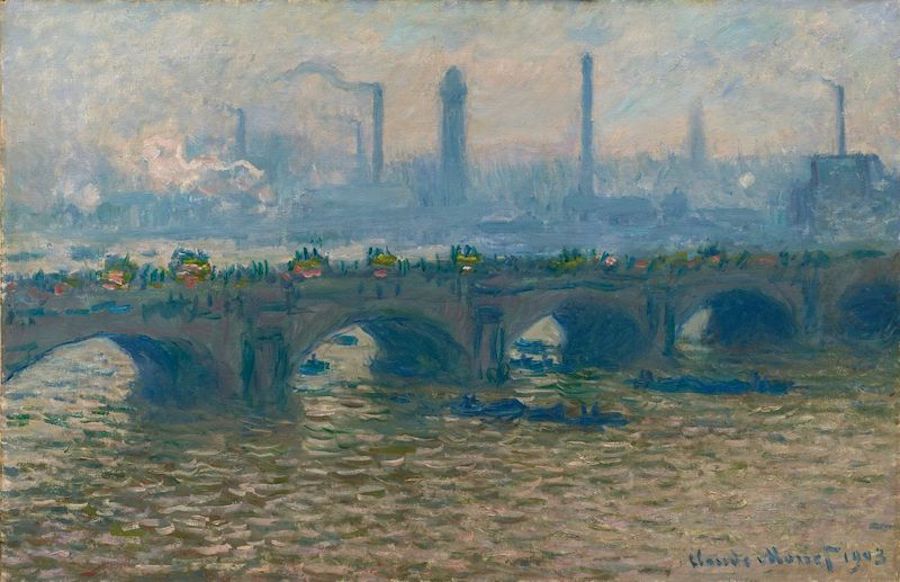For the first time in 120 years, The Courtauld Gallery is set to reunite an extraordinary collection of Claude Monet’s Impressionist paintings of London. The major exhibition, Monet and London. Views of the Thames” will run from September 27, 2024, to January 19, 2025.
These iconic works have never been the focus of a UK exhibition. During his three visits to London between 1899 and 1901, Monet captured the city’s landmarks—Charing Cross Bridge, Waterloo Bridge, and the Houses of Parliament—through his unique lens. While the series debuted in Paris in 1904 to great acclaim, Monet’s hopes of exhibiting the works in London were never realized. The Courtauld Gallery will now fulfil Monet’s unfulfilled ambition, just 300 meters from the Savoy Hotel, where many paintings were created.

Claude Monet (1840-1926), celebrated as the leading figure of French Impressionism is lesser known for his remarkable depictions of London. These paintings of the Thames reveal a city shrouded in atmospheric fog, a phenomenon unique to the industrialized London of the 19th century. Monet’s fascination with the city’s misty light and varied hues produced some of the most significant representations of the Thames, showcasing his ability to push the Impressionist style to new extremes.
Monet’s London series began during his extended stays in 1899, 1900, and 1901, with the works completed in his Giverny studio. Although Monet eventually created nearly 100 views of the Thames, the exhibition will focus on the 37 paintings presented during the 1904 Paris unveiling. This collection represents Monet’s artistic vision for his Thames series. After their initial display, the paintings were dispersed to collectors worldwide. The upcoming exhibition will feature 21 of these works, including 18 from the original 1904 display, offering a rare chance to experience Monet’s intended presentation.
The exhibition is sponsored by Griffin Catalyst, the civic engagement initiative of Citadel Founder and CEO Kenneth C. Griffin, with additional support from the Huo Family Foundation and the Dr Lee MacCormick Edwards Charitable Foundation.

Claude Monet’s Paintings of London: Capturing the Thames in Impressionist Splendor
Claude Monet, the master of French Impressionism, is renowned for his transformative approach to capturing light and atmosphere. While his depictions of French landscapes and gardens are celebrated worldwide, Monet’s series of paintings of London stands out as a significant, yet often underappreciated, chapter in his illustrious career.
Between 1899 and 1901, Monet made three extended visits to London, where he painted nearly 100 views of the Thames River and its iconic landmarks, including Charing Cross Bridge, Waterloo Bridge, and the Houses of Parliament. These paintings are celebrated for their evocative portrayal of London’s fog, a phenomenon Monet found uniquely compelling. The city’s industrialization in the 19th century created dense, colourful mists that Monet captured with unparalleled sensitivity, using his characteristic brushstrokes to convey the shifting light and atmosphere.
Monet’s London series represents a profound exploration of the interplay between natural light and urban landscape. His fascination with the Thames was driven by the river’s ever-changing hues and the London fog’s mysterious, almost ethereal quality. This environmental phenomenon transformed the mundane into the sublime, a challenge Monet met with his innovative use of colour and texture.
These works were first unveiled in Paris in 1904 to critical acclaim. Monet also intended to exhibit them in London, but this ambition was never realized during his lifetime. The paintings were eventually dispersed among various collectors, making viewing the series as a cohesive whole difficult.
Monet’s London paintings are among his most significant works. They embody the maturity of his Impressionist technique and his ability to capture the transient beauty of the natural world. They stand as a testament to his relentless pursuit of light and colour and his innovative vision, which forever changed the landscape of modern art.
The Courtauld Gallery, an internationally renowned art history education and research centre, advances the understanding of visual arts through its extensive collections, innovative teaching, and inspiring exhibitions. Founded in 1932, The Courtauld has consistently been at the forefront of art historical study and conservation.
The Gallery is celebrated for its Impressionist and Post-Impressionist masterpieces, including Van Gogh’s “Self-Portrait with Bandaged Ear” and Manet’s “A Bar at the Folies-Bergère.” It houses a significant collection from the Middle Ages to the present day.
Top Photo: Claude-Monet-1840-1926-Waterloo-Bridge-Sunlight-Effect-1903-oil-on-canvas-Milwaukee-Art-Museum.-Image-Courtesy-of-the-Milwaukee-Art-Museum.-Photo-John-R.-Glembin

